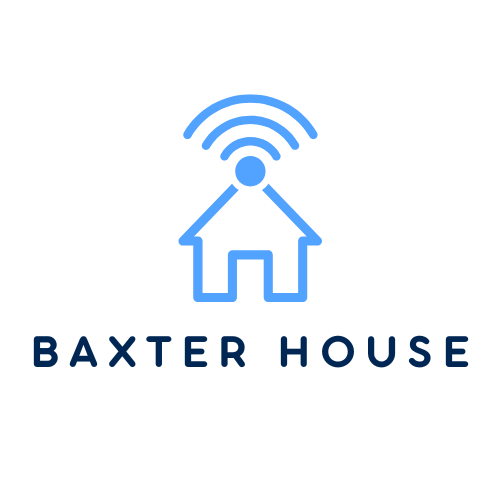In the ever-evolving world of Seattle real estate, it’s not just the coffee that’s brewing. As the city’s skyline reaches for the clouds, buyers and sellers alike are navigating a market that’s as dynamic as a Pike Place fish throw. Whether you’re dreaming of a cozy bungalow in Ballard or a sleek condo in South Lake Union, understanding the latest trends can make all the difference.
Table of Contents
ToggleOverview of Seattle Real Estate Trends
Seattle’s real estate market exhibits a mix of resilience and volatility, reflecting broader economic conditions. According to the Northwest Multiple Listing Service, the median home price reached approximately $800,000 in 2023, representing a notable increase from previous years. Inventory levels remain low, with only about two months’ supply available, intensifying competition among buyers.
Strong demand for housing stems from Seattle’s thriving technology sector, which has attracted numerous professionals and families. Remote work flexibility fuels this demand, as buyers search for homes that offer space for home offices and outdoor areas. Popular neighborhoods, such as West Seattle and Capitol Hill, showcase diverse architectural styles, appealing to a range of buyers.
Investors also play a significant role in shaping the market, particularly in multi-family housing. According to a recent report, the rental market in Seattle shows a vacancy rate below 5%, indicating strong demand for rental properties. This creates an incentive for developers to increase construction of multi-family units and apartment complexes.
Sustainability trends influence buyers’ preferences, as eco-friendly homes attract interest. Many buyers consider energy-efficient features and proximity to public transit when searching for properties. Renovated homes that emphasize green living command premium prices, reflecting changing buyer priorities.
Examining sales data over the past year reveals quick turnover rates. Properties listed in sought-after neighborhoods often receive multiple offers and sell within days. Sellers are now adapting their strategies, staging homes professionally and setting competitive prices to attract buyers.
Seattle’s real estate trends reflect ongoing demands, economic influences, and evolving buyer preferences. Continued monitoring of these patterns proves essential for stakeholders within the market.
Current Market Landscape

Seattle’s real estate market showcases intriguing dynamics. Significant trends highlight both challenges and opportunities for buyers and sellers alike.
Housing Prices
Recent data indicates the median home price in Seattle reached approximately $800,000 in 2023. A consistent rise over past years suggests a robust demand for housing. Many buyers prioritize homes with extra space, especially for home offices, reflecting the influence of remote work. High competition persists, particularly in sought-after neighborhoods like Capitol Hill and West Seattle. Properties often receive multiple offers, leading to quick sales. Consequently, sellers are encouraged to adopt strategic pricing to attract motivated buyers.
Inventory Levels
Current inventory levels present a tight market environment. Roughly two months’ supply of homes remains available, driving intense competition. Many buyers experience frustration due to limited listings. Multiple offers frequently occur, further straining buyers. Traditionally popular areas continue to see heightened demand, pushing up prices and reducing availability. As market pressures mount, sellers are urged to prepare homes effectively to stand out. Striking a balance between supply and demand remains crucial for sustaining overall market health.
Neighborhood Analysis
Seattle’s diverse neighborhoods attract various buyers. Understanding these areas provides insights into current market trends.
Popular Areas for Buyers
Capitol Hill ranks high among popular destinations, featuring vibrant nightlife and cultural attractions. Buyers favor West Seattle for its family-friendly atmosphere and scenic views of the Puget Sound. Ballard remains a favored choice for its charming Victorian homes and a strong sense of community. South Lake Union stands out with its modern condos and proximity to tech hubs, appealing to young professionals. Notably, homes in these areas often list quickly, reflecting the high demand and limited inventory. As a result, properties frequently receive multiple offers, further emphasizing the competitive nature of the Seattle real estate market.
Emerging Neighborhoods
Georgetown has emerged as a notable contender, attracting buyers with its industrial charm and evolving arts scene. South Seattle neighborhoods like Rainier Beach offer affordable options while benefiting from transportation improvements. West Seattle’s Delridge neighborhood shows promise, presenting opportunities for development and growth. Seattle’s North End, including Shoreline, garners interest due to its suburban feel and access to parks. These areas appeal to first-time buyers and investors looking for potential appreciation in property values. Continued investment in infrastructure enhances their desirability, making them hotspots for future market growth.
Buyer and Seller Dynamics
Seattle’s real estate market shows a strong interplay between buyer preferences and seller strategies. Understanding these dynamics becomes essential in navigating the competitive landscape.
Buyer Preferences
Buyers increasingly prioritize homes with dedicated office spaces due to the remote work trend. They also seek properties in diverse neighborhoods like Capitol Hill and West Seattle, where amenities enhance lifestyle quality. Eco-friendly features, such as energy-efficient appliances and sustainable materials, attract environmentally conscious buyers. Many individuals express a preference for homes in desirable areas with good schools and parks, indicating family-oriented choices. Quick purchasing decisions occur, particularly in popular regions, as motivated buyers recognize the urgency amid tight inventory.
Seller Strategies
Sellers employ various tactics to maximize their property’s appeal. Competitive pricing stands out as a critical strategy, helping homes attract more attention and offers. Effective staging and professional photography often result in quicker sales, providing sellers with advantages in highly sought neighborhoods. Sellers frequently make timely renovations, enhancing property value before listing, ensuring homes meet modern buyer standards. Flexible showing schedules help accommodate potential buyers, increasing engagement and offers. Strong marketing efforts, including digital advertising and social media outreach, allow sellers to reach wider audiences and highlight their homes’ unique features.
Future Predictions
Seattle’s real estate market is likely to experience notable shifts influenced by economic trends and demographic changes. Stakeholders must anticipate these shifts to make informed decisions.
Economic Factors Influencing Trends
Interest rates play a significant role in shaping the Seattle housing market. Rising rates might deter some buyers, lowering demand and potentially stabilizing home prices. Employment rates also impact market momentum. Strong job growth in tech and healthcare fields fuels demand for housing, particularly in urban areas. Additionally, overall inflation affects purchasing power, influencing buyer behavior. The region’s steady population growth contributes to long-term demand, ensuring Seattle remains attractive, especially for professionals seeking job opportunities.
Potential Market Changes
Developing infrastructure is poised to enhance Seattle’s appeal. Planned public transit expansions may increase accessibility, boosting home values in emerging neighborhoods. Changes in zoning laws could also encourage new construction, helping alleviate inventory shortages. Demand for eco-friendly homes will likely grow, prompted by sustainability trends among buyers. Demographic shifts, particularly among younger generations prioritizing urban living, may drive demand in historically underrepresented areas. Overall, anticipating these changes helps buyers and sellers respond effectively, ensuring strategic decisions align with market dynamics.
Seattle’s real estate market continues to evolve rapidly. Buyers and sellers must navigate a landscape marked by high demand and limited inventory. The city’s diverse neighborhoods offer unique opportunities for various preferences and lifestyles. As trends shift toward eco-friendly homes and remote work influences buyer needs, staying informed becomes crucial.
Looking ahead, economic factors and demographic changes will play significant roles in shaping the market. Anticipating these developments will enable stakeholders to make strategic decisions. Whether seeking a cozy bungalow or a modern condo, understanding Seattle’s dynamic real estate environment will empower buyers and sellers alike to seize opportunities as they arise.






